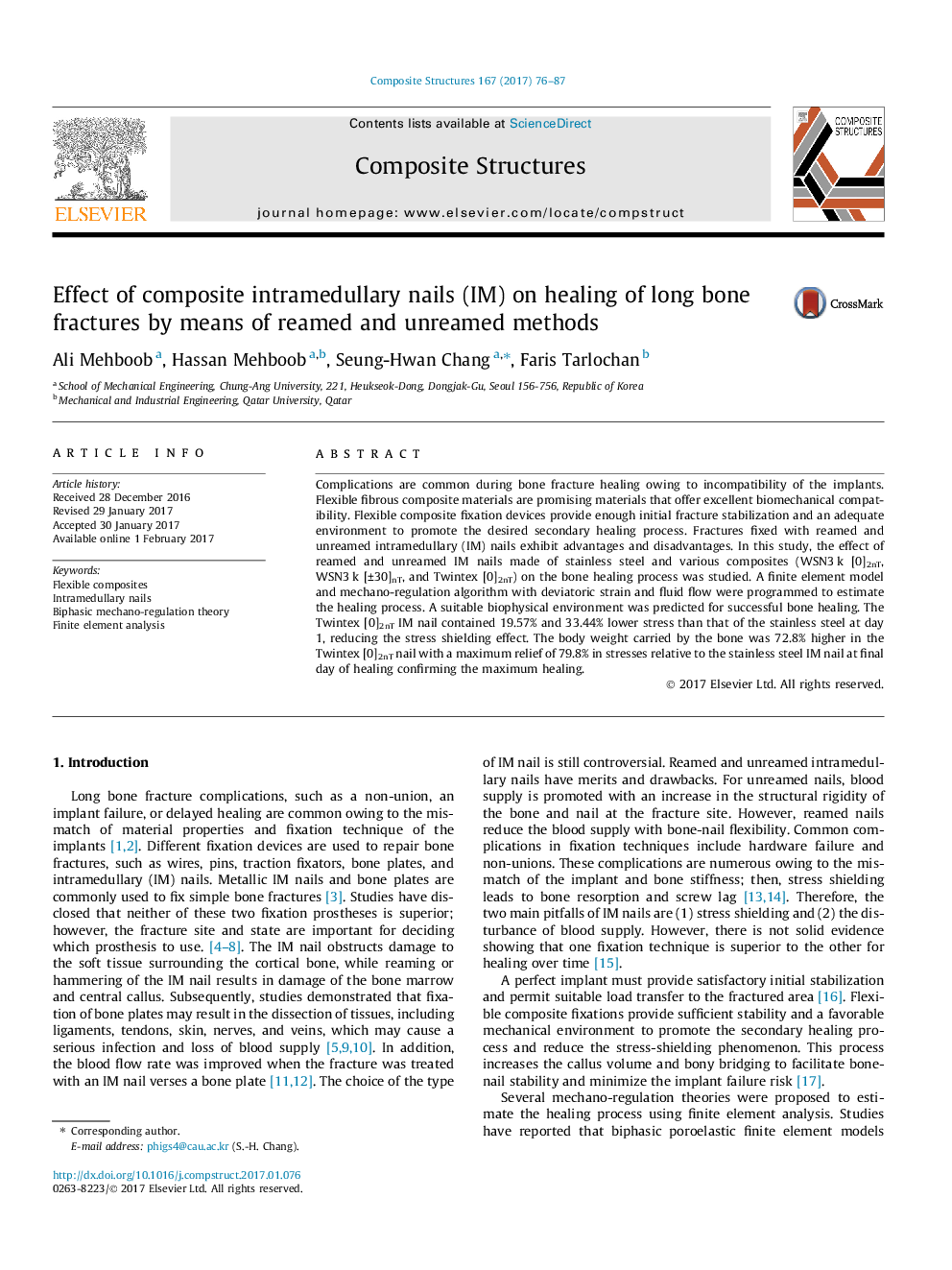| Article ID | Journal | Published Year | Pages | File Type |
|---|---|---|---|---|
| 4912226 | Composite Structures | 2017 | 12 Pages |
Abstract
Complications are common during bone fracture healing owing to incompatibility of the implants. Flexible fibrous composite materials are promising materials that offer excellent biomechanical compatibility. Flexible composite fixation devices provide enough initial fracture stabilization and an adequate environment to promote the desired secondary healing process. Fractures fixed with reamed and unreamed intramedullary (IM) nails exhibit advantages and disadvantages. In this study, the effect of reamed and unreamed IM nails made of stainless steel and various composites (WSN3 k [0]2nT, WSN3 k [±30]nT, and Twintex [0]2nT) on the bone healing process was studied. A finite element model and mechano-regulation algorithm with deviatoric strain and fluid flow were programmed to estimate the healing process. A suitable biophysical environment was predicted for successful bone healing. The Twintex [0]2nT IM nail contained 19.57% and 33.44% lower stress than that of the stainless steel at day 1, reducing the stress shielding effect. The body weight carried by the bone was 72.8% higher in the Twintex [0]2nT nail with a maximum relief of 79.8% in stresses relative to the stainless steel IM nail at final day of healing confirming the maximum healing.
Related Topics
Physical Sciences and Engineering
Engineering
Civil and Structural Engineering
Authors
Ali Mehboob, Hassan Mehboob, Seung-Hwan Chang, Faris Tarlochan,
